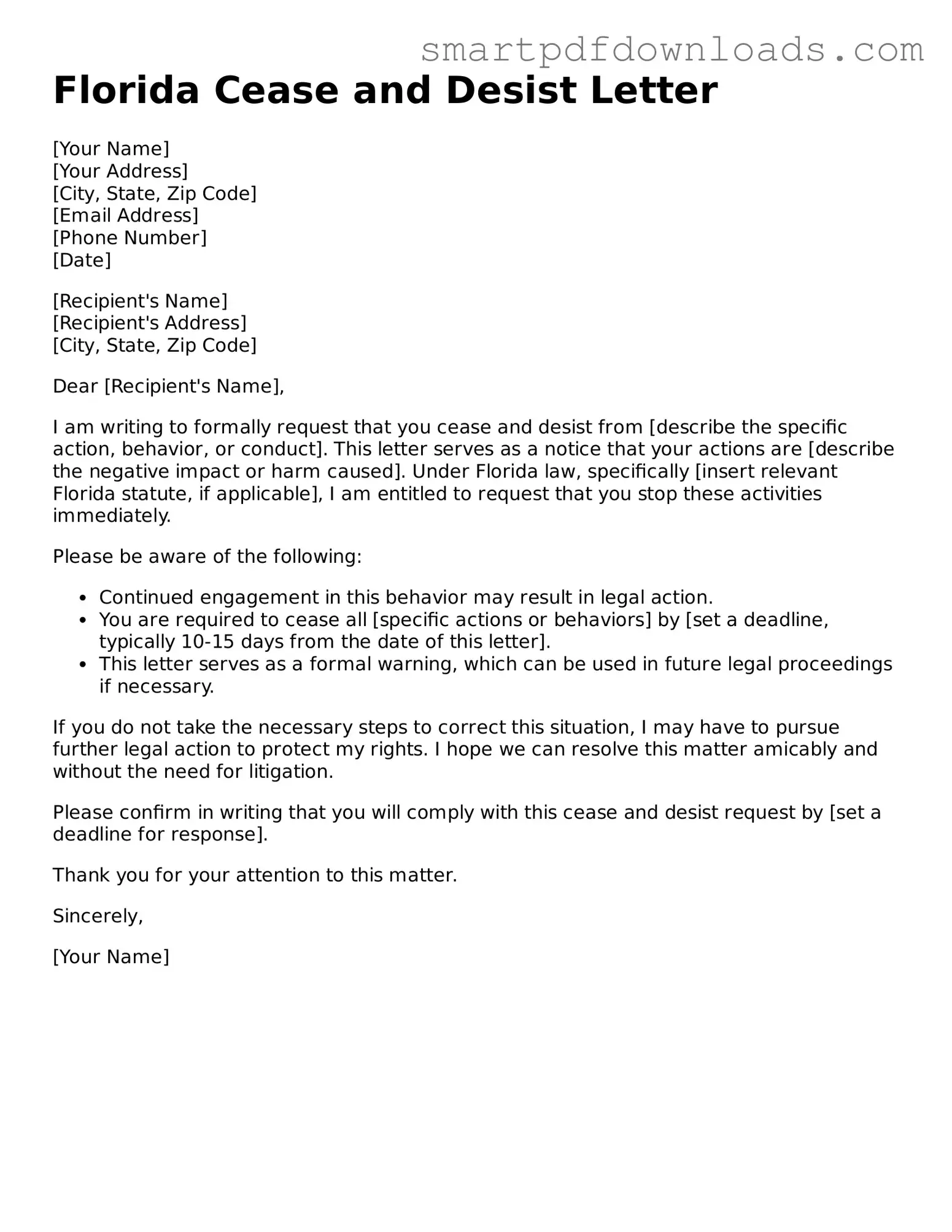Florida Cease and Desist Letter
[Your Name]
[Your Address]
[City, State, Zip Code]
[Email Address]
[Phone Number]
[Date]
[Recipient's Name]
[Recipient's Address]
[City, State, Zip Code]
Dear [Recipient's Name],
I am writing to formally request that you cease and desist from [describe the specific action, behavior, or conduct]. This letter serves as a notice that your actions are [describe the negative impact or harm caused]. Under Florida law, specifically [insert relevant Florida statute, if applicable], I am entitled to request that you stop these activities immediately.
Please be aware of the following:
- Continued engagement in this behavior may result in legal action.
- You are required to cease all [specific actions or behaviors] by [set a deadline, typically 10-15 days from the date of this letter].
- This letter serves as a formal warning, which can be used in future legal proceedings if necessary.
If you do not take the necessary steps to correct this situation, I may have to pursue further legal action to protect my rights. I hope we can resolve this matter amicably and without the need for litigation.
Please confirm in writing that you will comply with this cease and desist request by [set a deadline for response].
Thank you for your attention to this matter.
Sincerely,
[Your Name]
